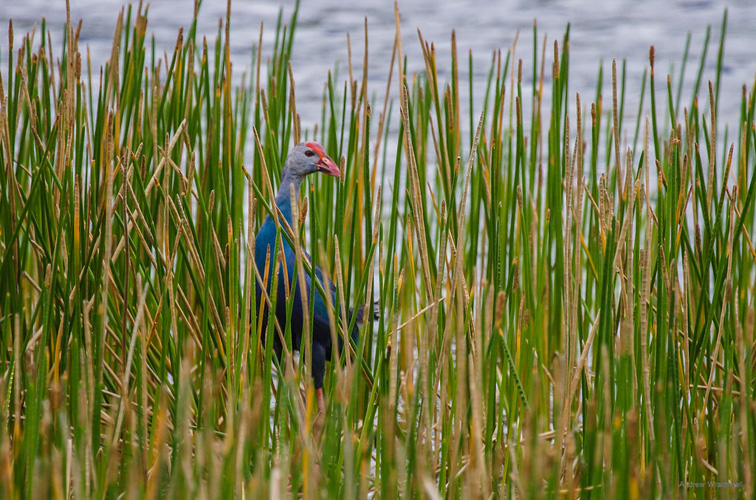Lost in the furor over the spread of Burmese pythons, lionfish and iguanas in Florida is another destructive invasive species that has quietly expanded from Broward County north to Indian River County and beyond over the past 20 years – with nothing to keep it in check.
It’s the purple swamphen, also called the gray-headed swamphen (porphyrio poliocephalus) – a beautiful violet-hued bird with a red bill and red legs that is often mistaken for the purple gallinule, a smaller bird native to Florida’s wetlands.
The swamphen’s native range extends from the Middle East to India, Southern Asia and the islands of the South Pacific. It got to Florida the same way just about every other non-native species did – people brought the birds here and the birds then either escaped captivity or were set free.
And like most unwelcome invaders, the purple swamphen is quite adept at extending its range and out-competing native birds for food and shelter.
“The extent to which they impact native ducks and other water birds is unknown at this point, but there is evidence that they do negatively impact native vegetation,” Florida Fish and Wildlife Conservation Commission spokeswoman Jamie Rager wrote in an email to Vero Beach 32963. “We do not have a population estimate available for this species at this time.”
In 2006, FWC biologists riding in airboats and armed with shotguns conducted a hunt for the birds in Everglades marshes in Palm Beach, Broward, Hendry and Glades counties. They killed more than 3,100 but didn’t even make a dent in that local population.
Florida’s invasive species coordinator at that time, Scott Hardin, said they realized the swamphens couldn’t be eradicated. Since then, the birds have moved north and can be found in the Stick Marsh, Headwaters Lake, TM Goodwin/Broadmoor Waterfowl Management Area, and the Upper St. Johns River Marsh in Indian River and Brevard counties.
An hour-long truck tour on the levees that surround the marshes and reservoirs of TM Goodwin/Broadmoor last week revealed at least a dozen swamphens walking through stands of cattails, bulrush and spike rush on long, spindly legs. FWC biologist Jon Webb pointed out large patches of spike rush – an important source of food and cover for native waterfowl – that the swamphens have destroyed.
Sightings reported to the well-respected Cornell Lab of Ornithology’s ebird database put the birds as far north as the Gainesville area.
About a decade ago, the FWC consulted with the U.S. Fish & Wildlife Service about holding a public hunt for the purple scourges, possibly in conjunction with the annual fall/winter duck season. But the Service shot down that proposal, advising the state that the swamphens are protected under the Migratory Bird Treaty Act because they are native to U.S. territories in the South Pacific.
“We continue to work with our partners at the U.S. Fish & Wildlife Service to develop a solution,” Rager wrote in an email.
The Cornell Lab says on its Birds of North America website “additional research on the potential impacts to native flora and fauna is badly needed.”
Dale Gawlik, professor, and director of the Environmental Science program at Florida Atlantic University in Boca Raton, has studied the swamphen problem and says now that the birds are established in Florida, the prospects for eradicating them have already passed.
“This is one where we just don’t have a lot of options,” Gawlik said.

